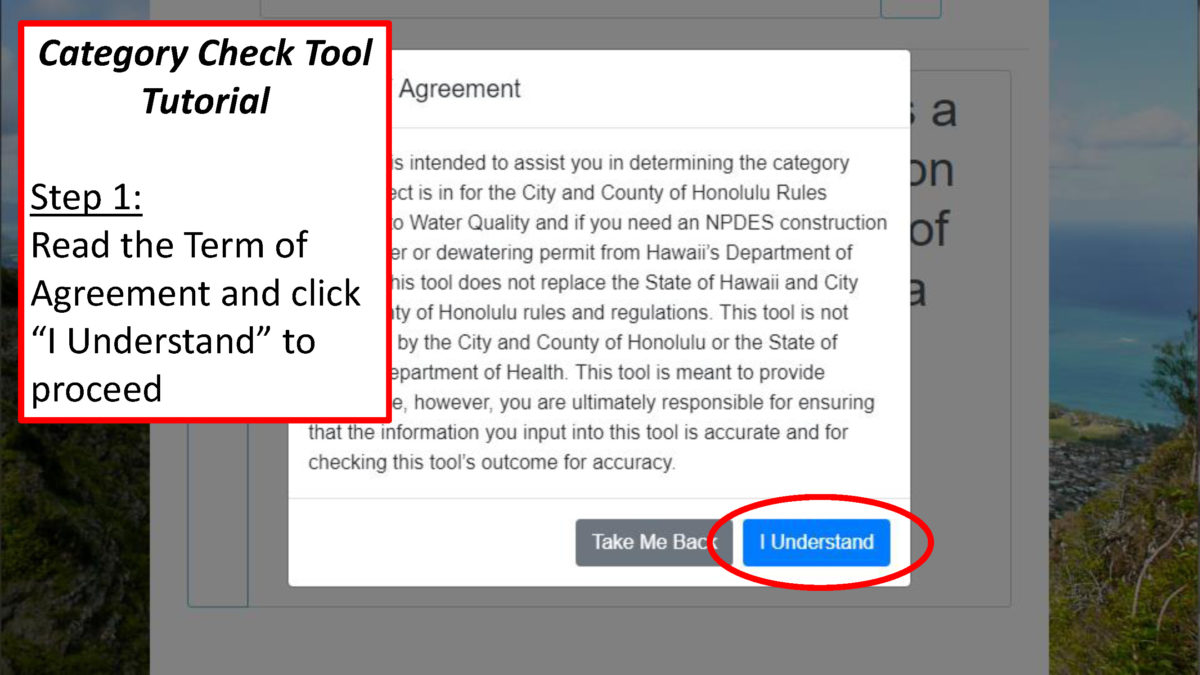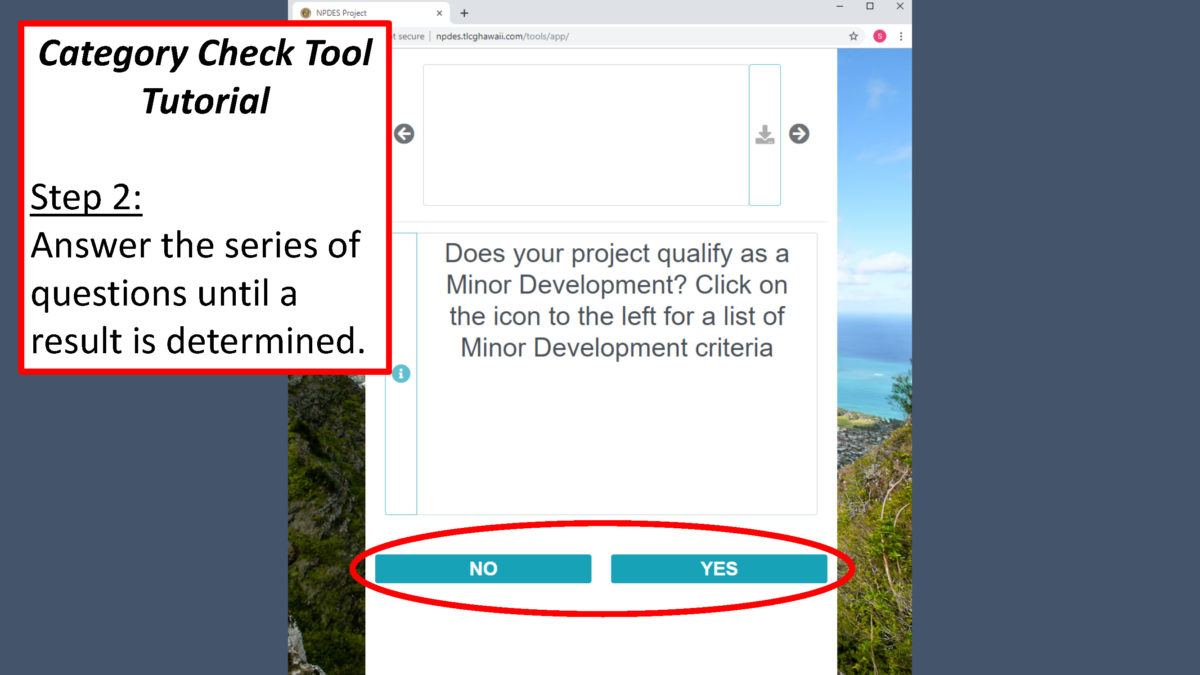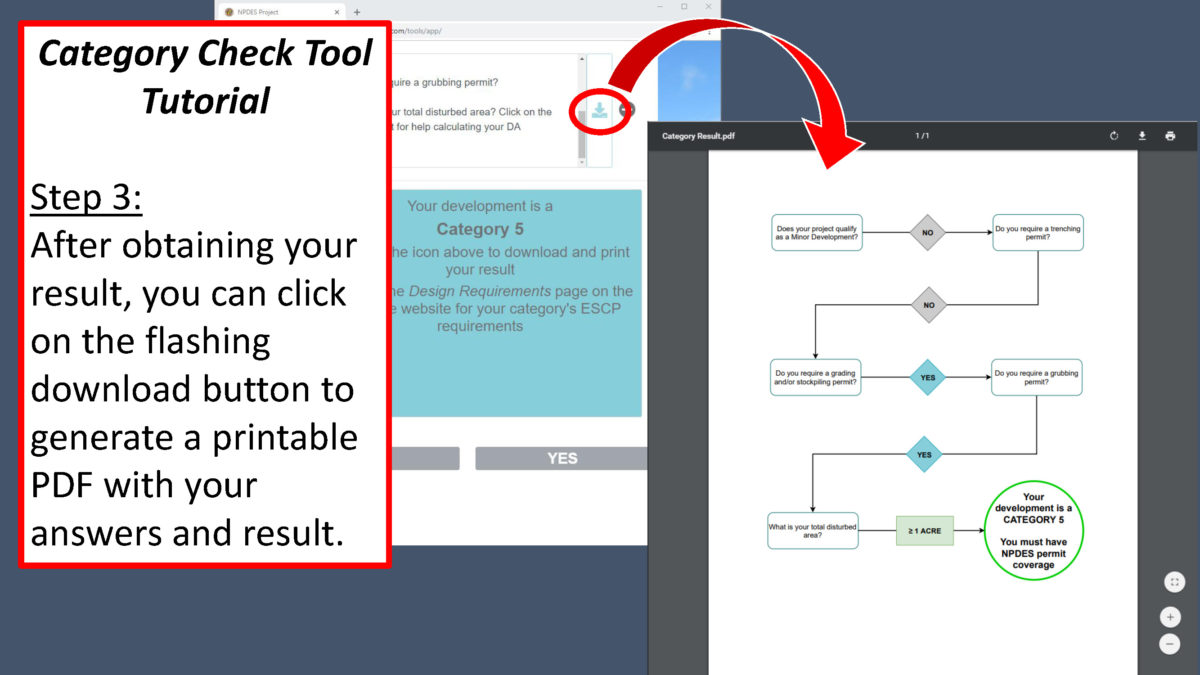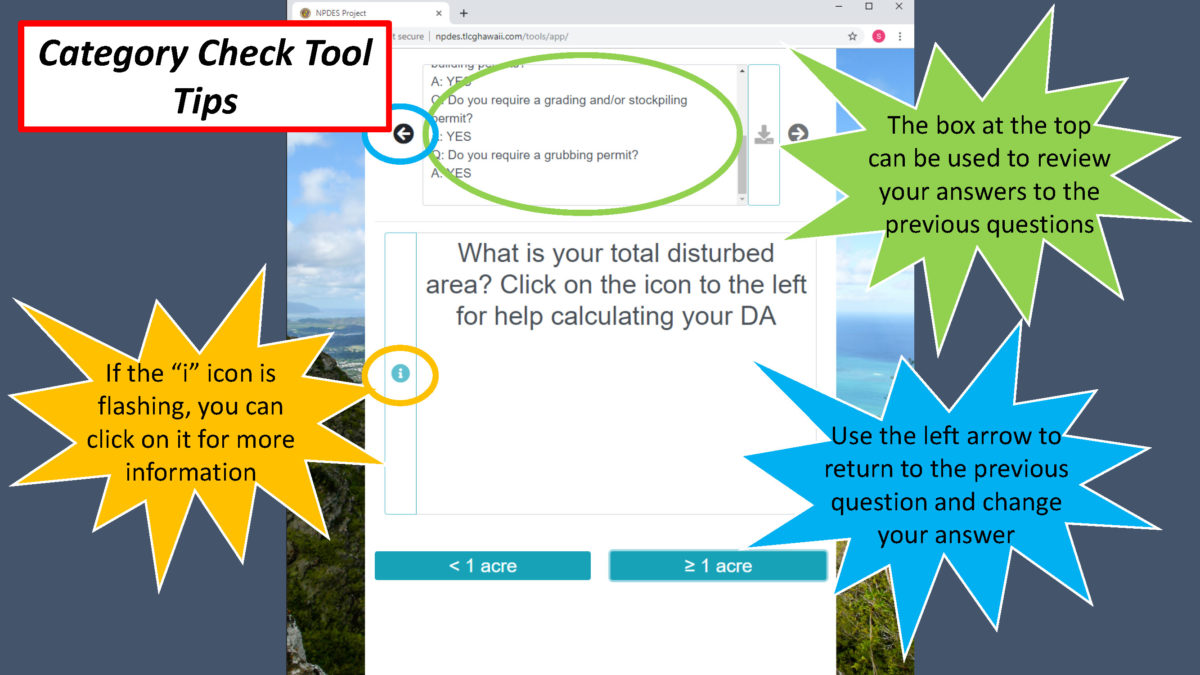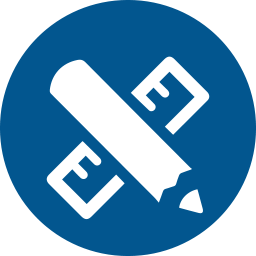
This page contains storm water related resources applicable to projects that disturb:
Area equal to or greater than 1 acre; or
Less than 1 acre of land, but is part of a larger common plan of development or sale that will ultimately disturb 1 acre or more of total land area
Note: For projects that disturb less than 1 acre of land (Categories 1A, 1B, 2, 3, 4, Trenching (< 1 acre) and Minor Development), see the Design Storm Water Tools (< 1 Acre) page instead for applicable design resources.
Projects meeting these criteria must comply with the Rules Relating to Water Quality, Effective Dec. 2018 (RRTWQ) and have coverage under a National Pollutant Discharge Elimination System (NPDES) Permit, such as Appendix C, Hawaii’s NPDES Construction Storm Water General permit. See below for tools and resources to assist in determining a project’s RRTWQ Category, preparing an Erosion and Sediment Control Plan (ESCP), applying for NPDES permit coverage, and creating a Storm Water Pollution Prevention Plan (SWPPP).
Project Categories for Development
Click on the Category Check tool to the right and answer the series of questions to determine your project’s category. At the end, download a PDF that documents your answers and the result. Alternatively, you can click on the second link to the right for a table comparing all of the RRTWQ category criteria.
Before using the Category Check tool, you will need to know:
- If the project will require any NPDES, trenching, building, grading, grubbing, and/or stockpiling permits
- The total disturbed area (DA) – use the worksheet to the right for help calculating the DA
- The size of the project’s zoning lot
- If land disturbing activities will occur on slopes 15% or greater
- If there is a proposed cut or fill greater than 15 ft in height
- Whether the development will be used for single/two-family dwellings or other uses
Note: Where a development qualifies for more than one project category, the higher project category shall apply unless it meets the criteria for a Minor Development.
Next Steps…
Each category has a different level of potential storm water pollution risk, and possesses its own specific set of requirements for its ESCP, Best Management Practices (BMPs), inspection frequency, etc. Click on the toolbox at the top of the page for more information about storm water requirements and other tools for your project’s category, and help to keep Hawaii’s waters clean, fishable, and swimmable.
Note: If the Category Check tool has determined that your project is either a Category 1A, 1B, 2, 3, 4, Trenching (< 1 acre) or Minor Development, see the Design Storm Water Tools (< 1 Acre) page instead for applicable design resources.
Integrated Checklists
The checklists (prepared by the City’s MS4 Program) and tables available to the right can help you determine if your ESCP includes the appropriate RRTWQ and NPDES requirements.
ESCP Design Guides
The links to the right offer design guidance documents that expand on pertinent RRTWQ and NPDES requirements. These checklists and design requirements guides (Revised Aug. 2019) are aimed to further assist in the development of ESCPs specific to each project category.
Applying for Coverage under the NPDES Storm Water Permit
Projects disturbing 1 acre or more of land must have coverage under either Appendix C, the NPDES General Permit Authorizing Discharges of Storm Water Associated with Construction Activity or an NPDES Individual Permit. The permit application will typically start in the design phase in order to allow time for processing, but the permit itself will ultimately be handed off to the Contractor as his/her responsibility.
Below are two options to apply for permit coverage. Click on the links for instructions from the State of Hawaii Department of Health, Clean Water Branch:
- Notice of Intent – for requesting coverage under the current Appendix C NPDES General Permit (Expires Feb. 2024)
- NOI Form C must be included in the NOI application
- Individual Permit – for requesting coverage under an independent permit specific to the needs of your project
- NPDES Form C must be included in the individual application
Note: There are other forms that must be submitted according to the discharge/activity that coverage is being requested for (e.g. Form G must be submitted for projects requiring dewatering operations). Click here for the list of forms. If applying for two or more discharges/activities, separate NOIs must be submitted for each. Alternatively, multiple discharges/activities may be combined under one individual permit.
Storm Water Pollution Prevention Plan (SWPPP) Templates
A SWPPP is a site-specific, written document that, among other things:
- Identifies potential sources of storm water pollution at the construction site;
- Describes storm water control measures to reduce or eliminate pollutants in storm water discharges from the construction site; and
- Identifies procedures the permittee will implement to comply with the terms and conditions of the NPDES general permit.
A SWPPP is required for all projects covered by the NPDES Construction Storm Water General Permit, and like the permit application, it can be established in the design phase, but will ultimately be handed off to the Contractor as his/her responsibility.
The template to the right was created by the City Municipal Separate Storm Sewer System (MS4) Program, and its utilization presents an opportunity to create consistency throughout projects.
City MS4’s SWPPP Template (DOCX)
Force Account, Line Item, and Allowance Guide
The purpose of this guide is to provide tips and examples to account for the costs of BMPs and compliance tasks through funding mechanisms, such as line items, force accounts, or allowances. Incorporating storm water components allows the contractor to accurately estimate the costs of BMPs and compliance tasks as well as be compensated for construction site pollution control.
Coming Soon!
Pre-Construction Discussion Points
Before construction begins, it’s important to discuss compliance requirements and determine who is responsible for what. Design and construction personnel, the contractor, and contracted construction managers (if applicable), will all have useful input in this discussion, and coordination is particularly important when more than one party is involved in the completion of a task. These pre-construction discussion points are intended to help usher this conversation and ensure common requirements are covered.
Coming Soon!

FEEDBACK?
Please contact The Limtiaco Consulting Group should you have any questions or require any assistance. Your feedback regarding any of the tools and information featured here is gladly appreciated.
The Limtiaco Consulting Group
npdes@tlcghawaii.com
(808) 596-7790


